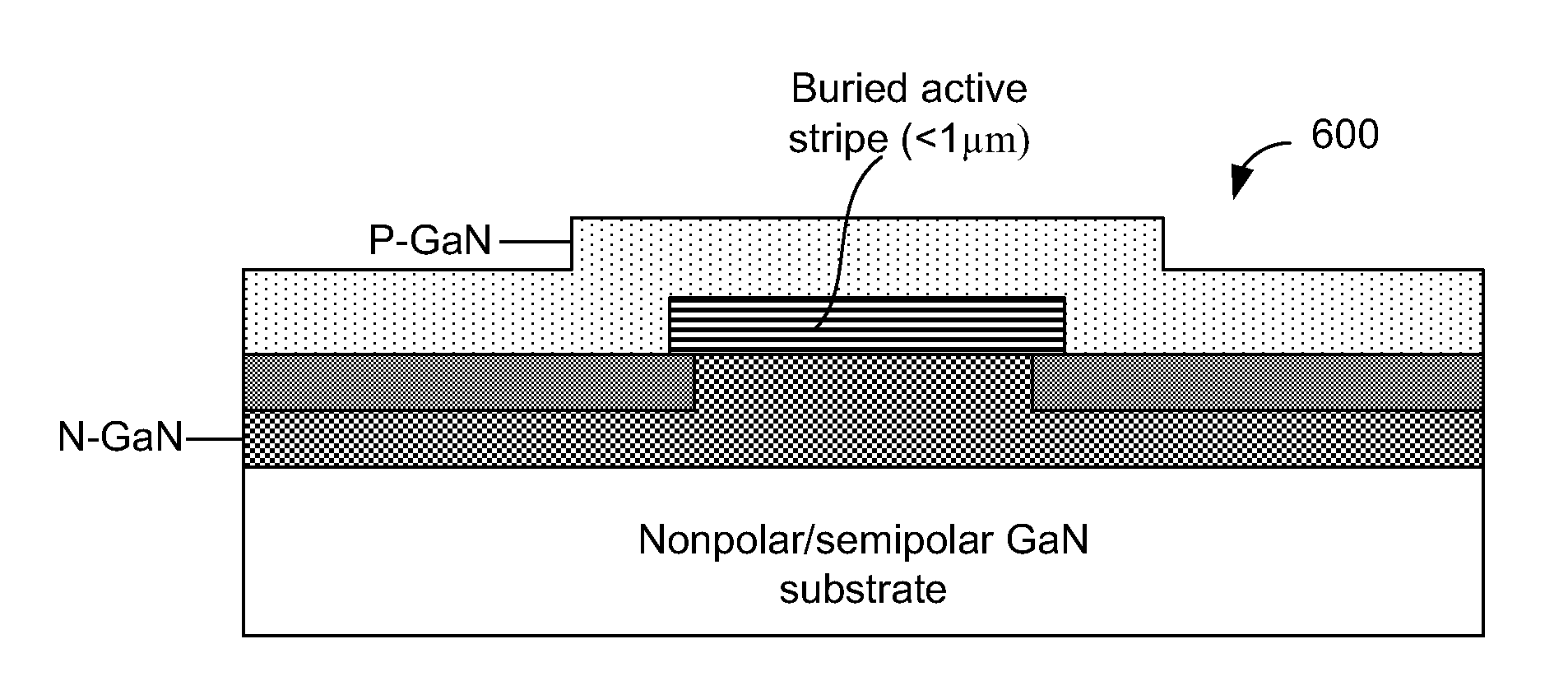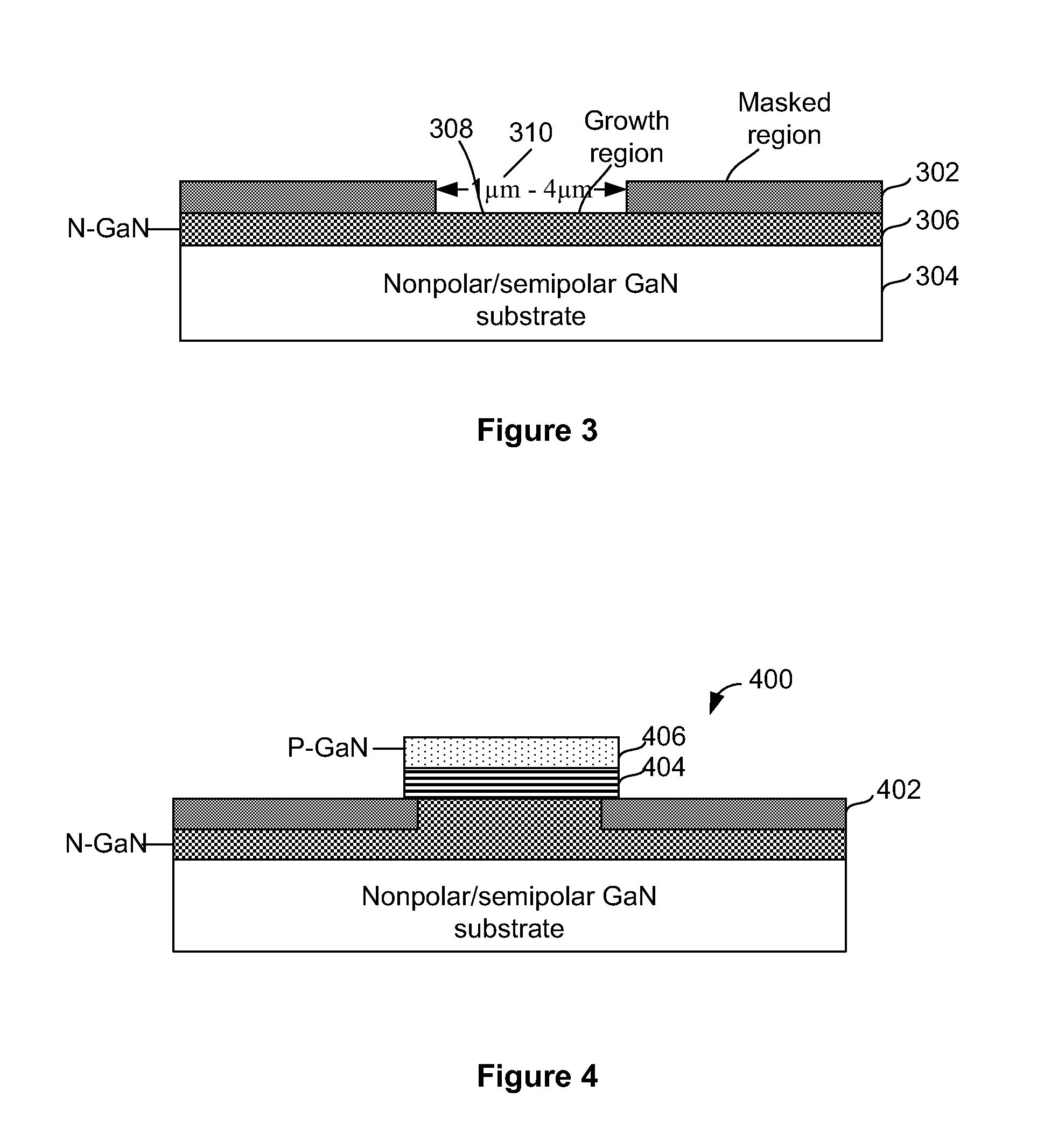Selective area epitaxy growth method and structure
a growth method and selective area technology, applied in the direction of crystal growth process, nanoinformatics, polycrystalline material growth, etc., can solve the problems of reducing material quality, poor crystal quality, and difficult growth of quality in-containing layers such as ingan with sufficient content to achieve emission wavelengths beyond 400 nm to the blue, green, yellow and red regime, etc., to achieve high incorporation, high brightness, and reinforce viability and promise
- Summary
- Abstract
- Description
- Claims
- Application Information
AI Technical Summary
Benefits of technology
Problems solved by technology
Method used
Image
Examples
Embodiment Construction
[0025]According to embodiment of the present invention, techniques related generally to optical devices are provided. More particularly, embodiment according to the present invention provides a method and device for emitting electromagnetic radiation using non-polar or semipolar gallium containing substrates such as GaN, MN, InN, InGaN, AlGaN, and AlInGaN, and others. Merely by way of example, the invention can be applied to optical devices, lasers, light emitting diodes, solar cells, photoelectrochemical water splitting and hydrogen generation, photodetectors, integrated circuits, and transistors, among other devices.
[0026]The present invention is directed to generate high efficiency GaN-based light emitting devices operating at wavelengths beyond 400 nm for blue, green, yellow and red emission. The proposed device will be used as an optical source for various commercial, industrial, or scientific applications. These structures are expected to find utility in existing applications ...
PUM
| Property | Measurement | Unit |
|---|---|---|
| mole fraction | aaaaa | aaaaa |
| mole fraction | aaaaa | aaaaa |
| mole fraction | aaaaa | aaaaa |
Abstract
Description
Claims
Application Information
 Login to View More
Login to View More - R&D
- Intellectual Property
- Life Sciences
- Materials
- Tech Scout
- Unparalleled Data Quality
- Higher Quality Content
- 60% Fewer Hallucinations
Browse by: Latest US Patents, China's latest patents, Technical Efficacy Thesaurus, Application Domain, Technology Topic, Popular Technical Reports.
© 2025 PatSnap. All rights reserved.Legal|Privacy policy|Modern Slavery Act Transparency Statement|Sitemap|About US| Contact US: help@patsnap.com



